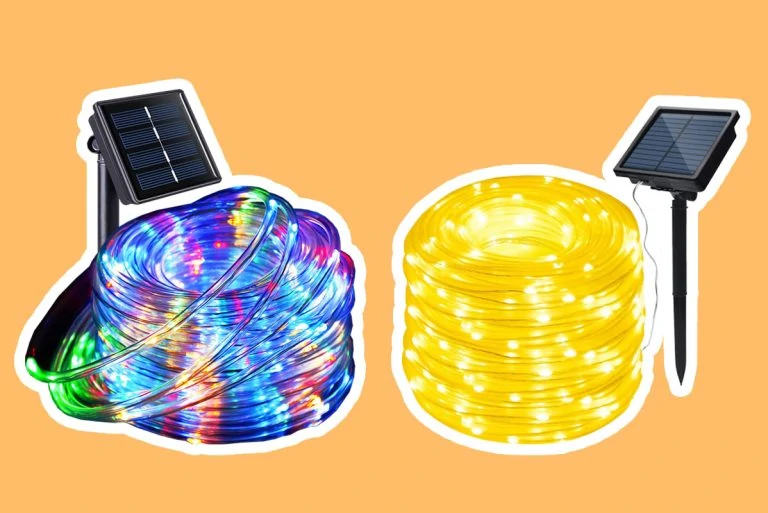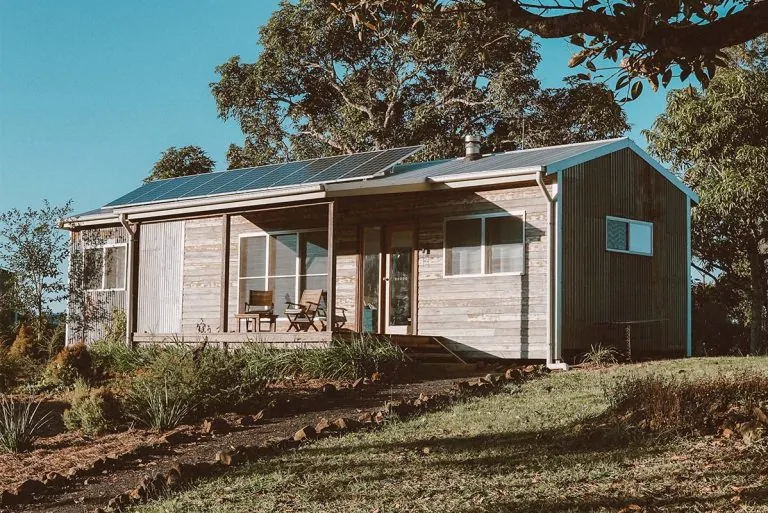Do you know that one of the biggest personal contributions to the greenhouse gases driving our climate crisis is from heating and cooling your home or heating domestic water?
According to the results of the latest Residential Energy Consumption Survey (RECS) conducted by the United States Energy Information Administration (EIA), homes account for 21% of primary energy consumption and 20% of carbon dioxide emissions in the U.S.
Here’s a graph showing 2015 residential versus commercial breakdowns of carbon dioxide emissions expressed in megatons (MT) from major energy uses in buildings:

Source: Rocky Mountain Institute
These home energy facts don’t get the press they deserve — even as governments the world over struggle to devise plans to reduce carbon emissions… and fast.
Those plans must include changes to how people heat their space/water and cool their homes. These practices lock in emissions for the 20-25 year lifespan of most HVAC systems or sometimes the 75-100 year building lifetime. Without changes, climate goals will likely remain out of reach.
Here are the top four energy uses at home according to the latest (2015) breakdown by the EIA:
| Reason for Energy Use | Percentage |
|---|---|
| Air conditioning | 17% |
| Space heating | 15% |
| Water heating | 14% |
| Lighting | 10% |
So, the most impactful place to start decarbonizing your life is right at home — especially in terms of space heating/cooling, water heating, and lighting.
Whether you’re looking to purchase a new home or thinking about retrofitting an old one to make it truly environmentally friendly, here’s a guide to making the electrification process go smoothly – and as inexpensively as possible.
To get a better understanding of electricity phenomena in general, check out our post, where we’ve gathered 30 fascinating facts about electricity.
Why the all electric house is the future
Home heating oil deliveries and blue-flamed gas stoves are quickly becoming relics of the fossil fuel past.
People are becoming more and more aware of how a small number of oil and gas companies dominated politics for decades to attract huge subsidies and tax breaks. Their billion-dollar profits came only through an intentionally deceptive campaign to convince the public that climate change was not real.
This devious campaign rages in full force today despite any talk by governments of voluntary climate accords.
However, the fossil fuel industry’s own scientists told them it was real almost from the beginning. They also said it was already happening.
Gradually, governments, industry, and the general public are realizing that human-caused climate change is here to stay — and will get much worse — unless we take drastic action to end fossil fuel burning immediately. There’s no longer a comfortable cushion of time for making the necessary transition to a carbon-free society.
What this means for you, the homeowner: Purchasing clean, green electricity derived from renewable sources like solar, wind, or hydropower for your home is now the first order of business.
Fortunately, home electrification is becoming easier and affordable.
Possibly you’re one of millions of homeowners already with rooftop solar, solar + storage, or a member of a community solar arrangement. As solar costs have plummeted, many more homeowners are transitioning to this form of renewable energy.
If you’ve already invested in home solar, it just makes sense to take the next logical step: Complete the transition to all-clean energy by equipping your home with all-electric appliances and HVAC.
With the efficiency of electric appliances and heating/cooling systems higher than ever — including everything from heat pumps to induction stoves — there really is no reason to wait any longer.
Moreover, imagine a house without any wires and chargers. Wireless electricity is the new technology that may one day power our homes. Learn about wireless power transfer and how it can change our future.
Benefits of all-electric homes
What’s the bottom line on choosing or going all-electric? Cost savings plus a whole lot more.
1. Cost savings from an all-electric home
For new homes, recent research by the Rocky Mountain Institute (RMI) showed in seven major U.S. cities that going all-electric wins hands down over mixed fuel (gas/oil and electric).
In October 2020, RMI analyzed data from:
- Austin, TX
- Boston, MA
- Columbus, OH
- Denver, CO
- Minneapolis, MN
- New York City, NY
- Seattle, WA
Here are a few of the most significant findings:
- Net cost savings over a 15-year period (accounting for startup installation and monthly bills) may be as high as $6,800 a year.
- With the exception of a cold-climate city (Minneapolis), upfront setup costs for all-electric are lower.
- Considering annual utility bills, five cities came in lower with all-electric (Minneapolis up to 9% lower), while two (Seattle and Boston) were comparable to mixed-fuel homes.
Retrofitting your gas- or oil-powered home with all-electric HVAC and appliances is also cost-effective.
Considering different scenarios, RMI analyzed data from four different cities in 2018 and showed that in most cases, switching to all-electric is cheaper.

Source: Rocky Mountain Institute
One obvious reason why all-electric HVAC and water heating are usually less expensive is that there is no added cost of setting gas lines, services, or meters. This is especially advantageous with new building construction. Retrofits in a newly gas-powered building lose this advantage.
2. Lower carbon emissions with all-electric
Not only is it more economical to live in an all electric house. It also results in a significant reduction of carbon emissions.
According to the RMI study, homeowners in Seattle and New York City enjoyed the greatest reduction (93% and 81%, respectively). Those in Minneapolis, Columbus, Boston, and Austin experienced more than a 50% reduction in greenhouse gas emissions compared to emissions from mixed-fuel homes.
3. Eliminate major sources of indoor air pollution
The U.S. Environmental Protection Agency (EPA) estimates that people spend up to 90% of their time indoors. So, it’s more important than ever to make sure your indoor air is clean.
According to the U.S. Consumer Product Safety Commission (USCPSC), one of three strategies to improve indoor air quality is source control. In other words, get rid of the polluting device or system and replace it with a cleaner version.
In homes, the major polluting sources are:
- Stoves
- Heaters
- Fireplaces
- Chimneys
Fortunately, consumers have plenty of non-polluting appliances and HVAC systems to choose from.
4. Do your part to reduce carbon emissions
Combining rooftop solar + storage with all-home electrification will effectively eliminate monthly utility bills and, if you use green electricity, lighten your carbon footprint. But, even if you’re not in a position to make a solar investment right now, you can still contribute to reducing carbon emissions in other ways.
Upgrading to energy-efficient appliances and heating/cooling pumps, especially those with top Energy Star ratings, will reduce the amount of energy you consume. This equates to fewer greenhouse gas emissions.
Most important components of all-electric homes
The major energy guzzlers of your home include:
- HVAC system
- Water heater
- Stove/oven
So, to save on utility bills while reducing carbon emissions, switch or choose among a wide variety of electric heat pumps for heating, cooling and hot water as well as an induction stove/oven for cooking. Don’t forget the light bulbs, either!
1. Electric heat pump for space heating and cooling
Geothermal heating and cooling is one way to go in terms of the source of electricity when it comes to all-electric HVAC at your house. On-site or community solar is another way. Purchasing green electricity from your local utility is yet a third.
In a home running exclusively on electricity, all of these ways create electric heat or cooling through heat pumps.
There have been several recent state initiatives to spearhead the rapid adoption of heat pumps as a way to green-ify buildings as a major component of climate plans. Colorado, Maine, and Massachusetts are just three states in the forefront of this effort.
Today, heat pumps can achieve energy efficiencies of 300% under ideal conditions. By comparison, the best a fossil fuel-operated furnace can get is 80-99% efficiency.
Higher efficiency translates into energy savings of 30-60% per year.
For 2021, the Energy Star program rates heat pumps by several metrics. The listing also provides information on annual energy use and cost savings for each product.
For colder-climate living folks, today’s air-source heat pumps can serve you as well as people in warmer states. Over the last decade, new technologies allow these heat pumps to function efficiently even in sub-freezing temperatures.
2. Electric heat pump for water heating
According to the most recent data generated by RECS, the majority of hot water heaters in use are gas-powered or conventional electric models. Although these products are not as efficient as heat pump water heaters (HPWH), they are cheaper.
Switching to a heat pump water heater (HPWH) is definitely cost-competitive when taking into consideration costs for environmental destruction when methane gas is used. However, under many different operating conditions, field studies of HPWH revealed they often cost less to operate than gas-powered models.
New homes will also benefit from choosing a heat pump water heater by avoiding gas infrastructure costs like pipelines, meters, and servicing.
However, even when HPWH cost more than gas-powered heaters, research by RMI in 2018 on zero-energy homes demonstrated that heat pump water heaters are “cost-optimal” when high performance qualities are considered in all six of the cities they profiled.
Cost-competitiveness of HPWH is predicted to get better fast according to the National Renewable Energy Laboratory’s (NREL) 2017 study. The report estimates a 30% reduction in costs along with a 10-20% increase in efficiency in the next 10-20 years.
Lastly, using “smart controls” on heat pump water heaters will drive the costs even further downward by 3-20%, according to RMI’s 2017 report.
If you currently live in a house with conventional water heaters, you can easily find out how to switch to a heat pump water heater. The Energy Star program has a helpful calculator in its online water heater replacement guide.
3. LED lighting
The rockstar for home (and office) lighting is LED (light-emitting diode) bulbs.
The Energy Star analysis of LEDs to other types of lighting shows up to 80% greater efficiency for much longer times, and at significant savings.

Switching out your light bulbs is the easiest way to go all-electric in your home.
4. Induction stove and oven
Cooking uses less than 2% of all home energy, according to the EIA. But about 35% of American homes in 2017 used gas-burning stoves for cooking. This is problematic for a few reasons.
- First, a 2014 study showed that cooking on a gas stove added significant amounts of nitrogen dioxide and carbon monoxide to indoor pollution that exceeded health guidelines, especially when exhaust vents were absent or closed. Both chemicals are common components from methane gas burning.
- Secondly, burning this fossil fuel raises the amount of carbon dioxide, the major greenhouse gas, in the atmosphere.
- Lastly, it also adds methane to the air, a more potent substance than carbon dioxide in accelerating our climate crisis.
The best choice for home cooking is by induction, which relies on magnetism. There is no indoor air pollution. In most cases, induction is also more energy-efficient.
According to 2014 research conducted by the Electric Power Research Institute (EPRI), in cases where small cookware was used, cooking by induction is much more energy-efficient than both gas-burning and conventional electric stoves:
| Type of cooking | Efficiency |
|---|---|
| Induction | 76% |
| Conventional electric | 42% |
| Methane gas | 30% |
By comparison, cooking by a conventional electric stove was 83% efficient when large cookware was used. The induction method efficiency did not change.
Challenges to all-electric homes going mainstream
Transitioning off of carbon-based fuels to become all-electric is hindered by outdated, common misconceptions and the sheer power of the fossil fuel industries.
Misconceptions about how good fossil fuel energy is
It’s commonly believed that oil and gas — and the appliances and HVAC systems that run on them — are more reliable and efficient than alternatives.
Time and time again, this article presents evidence to the contrary.
Technological improvements, especially in heat pumps, light bulbs, and induction cooking make all-electric homes not only possible, but also more cost-effective and energy-efficient.
As renewable energy technologies become cheaper, fossil fuels are increasingly seen as stranded assets with no future.
Existing regulations and building codes
Fossil fuel industries wield great power in establishing the building codes that state and local governments across the U.S. must follow. The International Code Council (ICC) is the leading organization to draw up these codes.
Despite climate and sustainability plans being drawn up all over, the ICC recently proposed a new system of operation that gives more control over code planning to the building and gas industries. In fact, the industries can reject whatever governments and citizens demand in terms of energy efficiency in buildings.
In response, the American Institute of Architects (AIA) and numerous environmental groups stated that the proposal is a step backward from the rapid decarbonization needed to meet climate goals. Several U.S. lawmakers echoed similar warnings to the ICC about how the changes will “derail” climate progress.
Unless the Biden Administration and the Department of Energy act to reverse this decision, or decide to opt out of adherence to the ICC building codes and instead create their own, it is expected that there will be further stumbling blocks to becoming all-electric in the United States. Examples of the difficulties could involve tax incentives for hooking up gas but not for heat pumps, or government rebates for gas water heaters but not heat pump water heaters.
Wrap up on all-electric homes
Most of the carbon emissions you produce is tied to your home — especially space heating and cooling, water heating, and lighting.
Decarbonizing your residence and making it all-electric is the best way to reduce your personal carbon footprint.
In general, electric heat pumps, heat pump water heaters, induction stoves, and LED lights are more energy-efficient and less costly over time than their fossil fuel or incandescent counterparts. Now you have every reason to make the switch or choose a fossil-free home.








![10 Truly Green Prefab Homes [+1 That’s Close]](https://greencoast.org/wp-content/uploads/2021/10/eco-friendly-prefab-homes-768x513.jpg)




